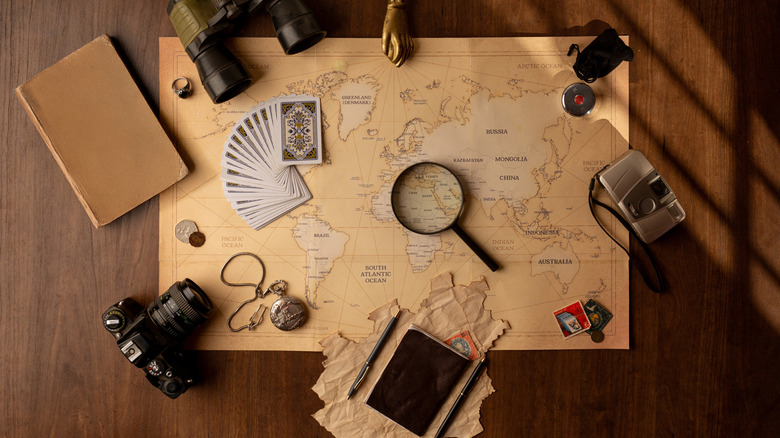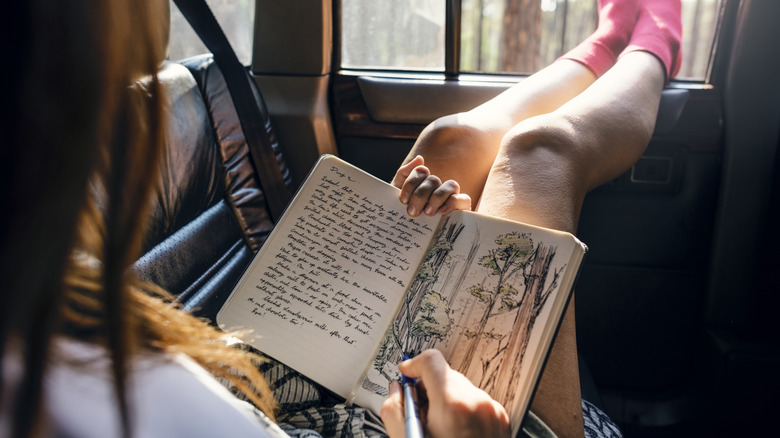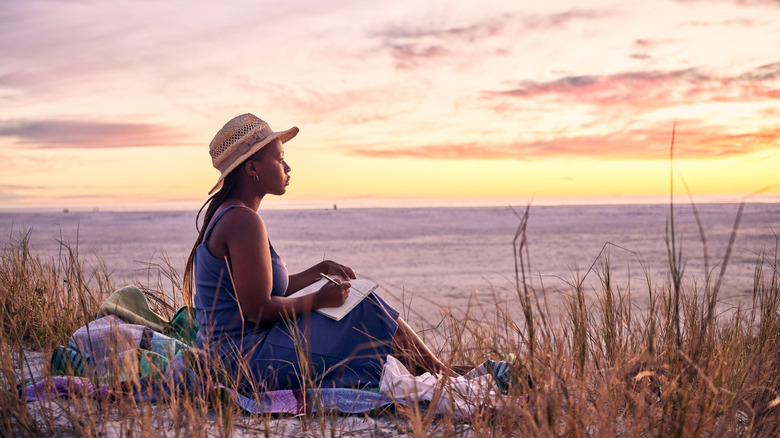Rick Steves' 'Most Treasured Keepsake' From Every Trip Is One All Travelers Should Collect
The best thing you can bring home from your travels is memories that will last a lifetime. Souvenirs are a fun way to commemorate a big trip — but there's nothing material that can compare to the experiences themselves. One of the best ways to remember your trip and relive each special detail is to keep a travel journal. Rick Steves, renowned travel expert, always writes in a journal during his adventures abroad. Over the course of his long life, his journals have become one of his most cherished keepsakes.
During summer 1969, when Steves was just 14 years old, he traveled to Europe for the first time with his parents. That trip ended up shaping the course of his entire life, because it was then that he first fell in love with travel. Around the same time, his love for journaling was born. "On my first trip to Europe ... I collected and logged my experiences in a file of a hundred postcards, each numbered and packed with my notes," he wrote in a blog post entitled, "The Zen of Travel Journaling" which is posted on his website.
After that first trip, he never stopped writing about his travels. For Steves, chronicling his adventures blossomed into a lucrative career. He's published around 100 guidebooks, and many of them are bestsellers. You don't have to be an aspiring travel writer in order to benefit from keeping a journal during your trips abroad. Even if you haven't written more than a email or grocery list since your school days, journaling will allow you to keep your travel memories close long after your trip comes to an end.
A travel journal makes the perfect souvenir
Studies show that keeping a journal can be wonderful for mental health, but when it comes to travel journaling, the real magic happens months and years after your pen leaves the page. When you return to your journal to re-read what you've written, it can feel as though you have been transported back in time.
Suddenly, you can almost taste that bowl of pesto spaghetti you enjoyed in Italy. You can once again smell the scent of tropical flowers that lingered in the thick humid air on your trip to Costa Rica, or hear the sounds of the busy streets of London. There's no better souvenir than one that allows you to relive your trip again and again. Plus, a travel journal is an excellent budget-friendly souvenir.
As Steves so eloquently wrote, "Without capturing your thoughts on paper (or on your laptop or tablet), the lessons of travel are like shooting stars you just missed ... and butterflies you thought you saw." He's right. Science suggests journaling can actually help improve long-term memory, even without re-reading what you've written. If you want to remember a particular experience in vivid detail, write it down. "Collecting intimate details on the road, and then distilling them into your journal, sharpens your ability to observe and creates a keepsake you'll always cherish," Steves wrote. Journaling is something he does on every trip.
Tips for creating a journal that will serve as a keepsake and an heirloom
The best way to begin keeping a travel journal is to simply start writing! Steves recommends putting pen to paper before even arriving at your destination. "I now have a set routine: On the flight over to Europe, I make a personal inventory of my mindset and my hopes for the trip," he wrote. Your first few journal entries don't have to be long, thought out, or eloquent. If you're feeling stuck, start with a simple list of things you're excited about.
Once you arrive, Steves suggests carving out a few moments each day to journal. "You don't have to give a chronological account of your journey. In fact, you probably shouldn't. Consider just sitting somewhere interesting and writing about your immediate surroundings or focusing on a specific interaction you've had with a local," he advised. He also suggests leaving out the boring stuff and focusing on things you'd like to remember most.
Steves prefers journaling the old-fashioned way — with a pen and a notebook. You could also journal using your laptop or iPad. There are no rules! That being said, a physical journal can make a beautiful keepsake, and can be passed down to future generations. Imagine your great-great grandchild reading about your adventures abroad. Consider how excited you might feel if you inherited such a treasure from one of your own ancestors. Besides, choosing a journal is part of the fun, according to Steves. "Throw in sketches, mementos, little paper souvenirs like maps and old tickets — anything that takes you back to that moment," he suggested. "After your trip, a bound book can become a classic on your bookshelf."


